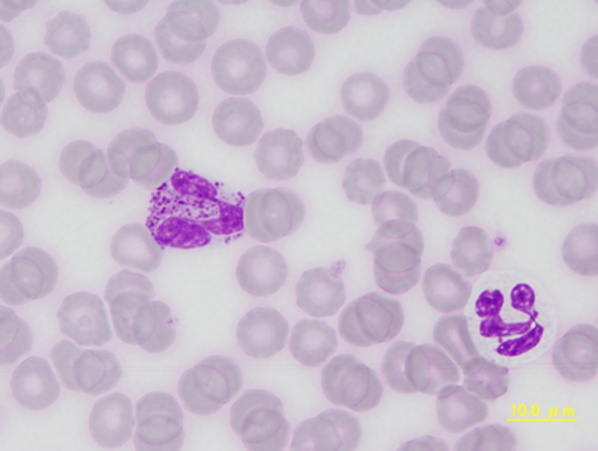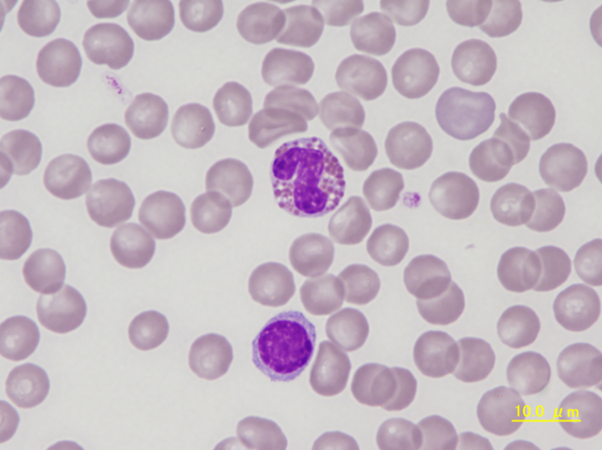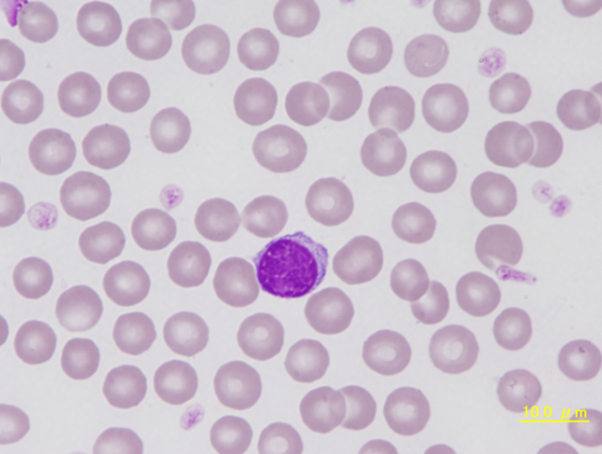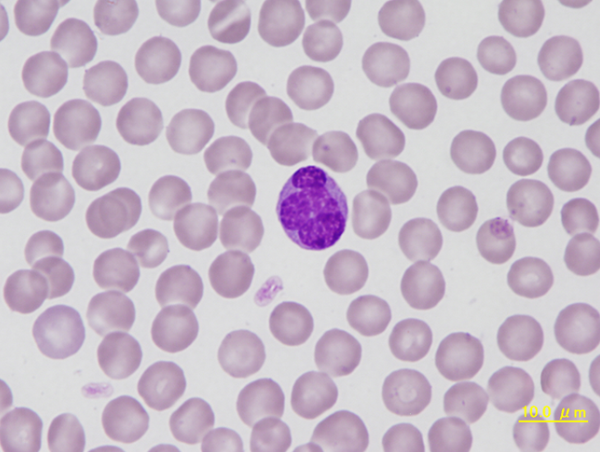Scientific Image Gallery

Canine eosinophil nuclei are less lobulated than those of neutrophils. The number and size of the contained azurophilic granules are variable: some cells are filled with small similarly sized granules while others contain sparsely distributed granules of various sizes or only several large-size granules. Small vacuoles are often found in the cytoplasm.
<p>Canine eosinophil nuclei are less lobulated than those of neutrophils. The number and size of the contained azurophilic granules are variable: some cells are filled with small similarly sized granules while others contain sparsely distributed granules of various sizes or only several large-size granules. Small vacuoles are often found in the cytoplasm.</p>
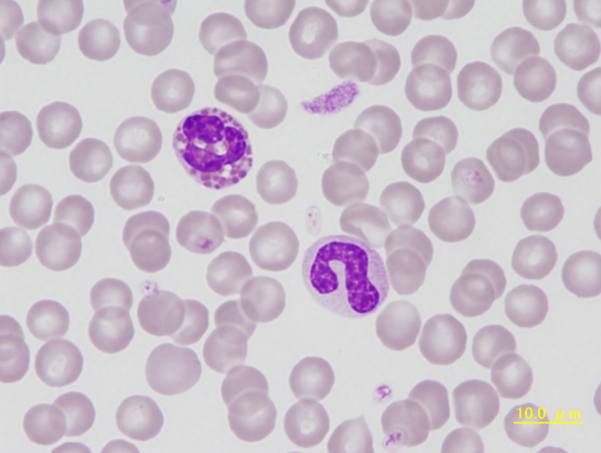
Platelets that are 2/3 of the size of red blood cells or larger are called ‘giant platelets’. They are occasionally found in a healthy animal, and a high occurrence of giant platelets may be accompanied by decreased platelet counts.
<p>Platelets that are 2/3 of the size of red blood cells or larger are called ‘giant platelets’. They are occasionally found in a healthy animal, and a high occurrence of giant platelets may be accompanied by decreased platelet counts.</p>
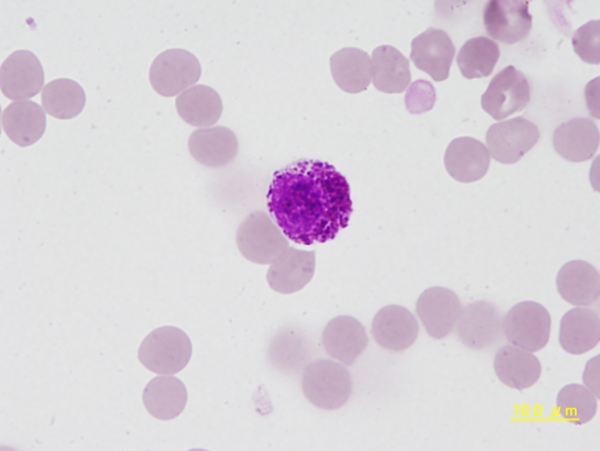
Mast cell found in a cytospin sample collected from the peritoneal cavity. Typical characteristics of mast cells are a round to slightly oval nucleus and fine-to-coarse red to deep purple cytoplasmic granules. Red blood cells are present due to mild haemorrhage.
<p>Mast cell found in a cytospin sample collected from the peritoneal cavity. Typical characteristics of mast cells are a round to slightly oval nucleus and fine-to-coarse red to deep purple cytoplasmic granules. Red blood cells are present due to mild haemorrhage.</p>
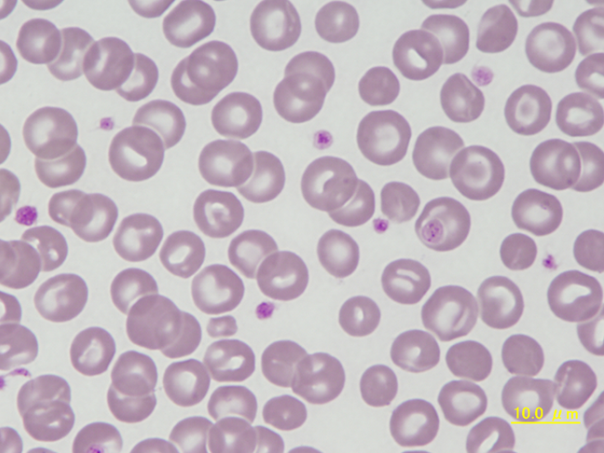
Blood smear of a 6-year-old male Pomeranian dog suffering from hepatic dysfunction associated with cholestasis and pancreatitis. Several microcytes of variable size which may become sphere-shaped.
<p>Blood smear of a 6-year-old male Pomeranian dog suffering from hepatic dysfunction associated with cholestasis and pancreatitis. Several microcytes of variable size which may become sphere-shaped. </p>
